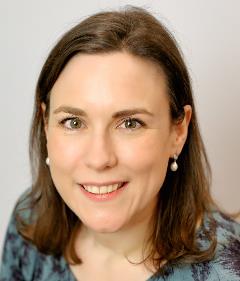#ThisIsAPlasticSurgeon - Nora Nugent
16th March 2020
Over the past few months we asked some of our members various questions about their careers in plastic surgery, their thoughts on innovation and what advice they may have for others, both professional and public. The resulting profiles demonstrate the diversity of the specialty and those within it.
If you are a BAPRAS member and would like to be included in this series please contact emma.brighton@bapras.org.uk.
Nora Nugent
 What or who inspired you to become a plastic surgeon?
What or who inspired you to become a plastic surgeon?
I was drawn to plastic surgery by the variety of procedures in the speciality with many based on similar guiding principles. The other aspect of plastic surgery that appealed to me was the immediate and long lasting impact of functional and physical restoration in reconstructive procedures. This carries over to aesthetic surgery where there is often an aim of both restoration and enhancement in our procedures. While we have “standard procedures”, each individual patient also requires a bespoke and tailored approach with careful planning.
What one piece of advice would you give to someone starting out in their plastic surgery career?
Do not get disheartened by the length of time involved to become a plastic surgeon or the hurdles and competition along the way. Look at the specialty requirements and work towards achieving them. Don’t be afraid to take opportunities that come your way!
What innovation do you believe has made the biggest difference to plastic surgery as a specialty in the last century?
Understanding vascular (blood vessel) anatomy and the advent of microsurgery has revolutionised reconstructive surgery as well as the advancements in anaesthesia and postoperative care. We see this in breast reconstruction, head and neck reconstruction and limb reconstruction. Microsurgical tissue transfer (where tissue is detached from one body area and reattached to another using microsurgery to reconnect blood vessels that allow the tissue to survive in its new place) has allowed much more advanced, complex and innovative reconstructions to be performed. Anaesthetic and post-operative care advancements allow them to be done safely and with a planned and progressive recovery and rehabilitation programme.
What areas of plastic surgery do you think have seen the most innovation?
The development of microsurgery has allowed amazing advancements in reconstructive tissue transfers or flap surgery. This has allowed breast, head and neck and limb reconstruction to advance immensely.
In burns, the advancements in critical care and resuscitation, knowledge of post-burn pathophysiology and creation of skin tissue banks and skin cell cultures now give victims of severe burns a chance of survival and rehabilitation.
We are also currently seeing some huge progress in melanoma treatment with new immunotherapies being developed and showing great promise for some patients who would not previously have had treatment options.
In aesthetic surgery, innovations continue in all areas. Surgical procedures are being refined and sometimes combined with other technologies such as plasma or radiofrequency to get optimal rejuvenations. We are now seeing advancements and refinements of all major aesthetic procedures presented and discussed at our national conferences. The non-surgical aesthetic arena has advanced at a huge rate with new technology and products appearing all the time. This comes with a word of caution – while some have revolutionised particularly facial aesthetic treatments, not all new products and technologies have stood the test of time or critical appraisal!
What are the key things that people need to consider before making the decision to go ahead with plastic surgery?
They should consider exactly why the want the surgery and what is motivating them to seek it. What do they want to achieve with surgery and can the procedure in question actually achieve this? The public should also think about when a good time to undergo surgery would be and how this may impact their health, home life and work.
How can patients ensure they are going to receive safe plastic surgery from a qualified plastic surgeon?
Check the GMC specialist register for plastic surgery or the 'Find a Member' sections of the BAPRAS or BAAPS websites as all members will have fulfilled the requirements to be a fully accredited plastic surgeon. Ensure that the hospital or clinic is registered with the CQC (Care Quality Commission) for the procedure and meet the surgeon who will be performing the procedure before the surgery date (ideally two consultations with 'cooling off' periods). Finally, make sure you know what is included in the surgery with regards to the procedure, aftercare, follow-up appointments, emergency care and revision policies.
What do you believe have been the biggest threats to plastic surgery patient safety across this period?
- Failure to regulate who can perform cosmetic surgery or all themselves a cosmetic or plastic surgeon
- Failure to regulate the non-surgical aesthetic sector
- Patients risking safety, health and aftercare for a cheaper price
- Lack of clarity in marketing of cosmetic procedures regarding what is involved in the procedure, what it can achieve, and who is performing the surgery
Read further profiles below
- Rebecca Dunlop
- Ruth Lester
- Shehan Hettiaratchy
- Rowan Pritchard Jones
- Abhilash Jain
Back to list page